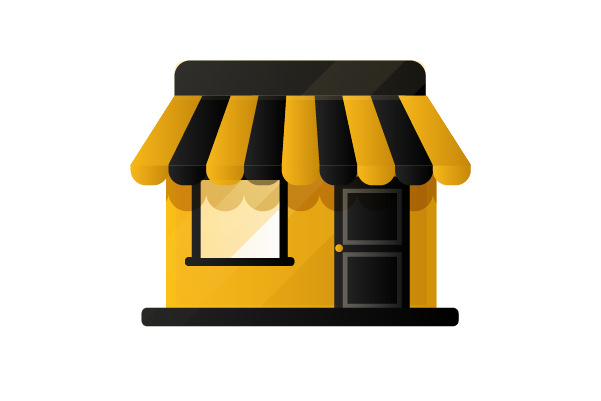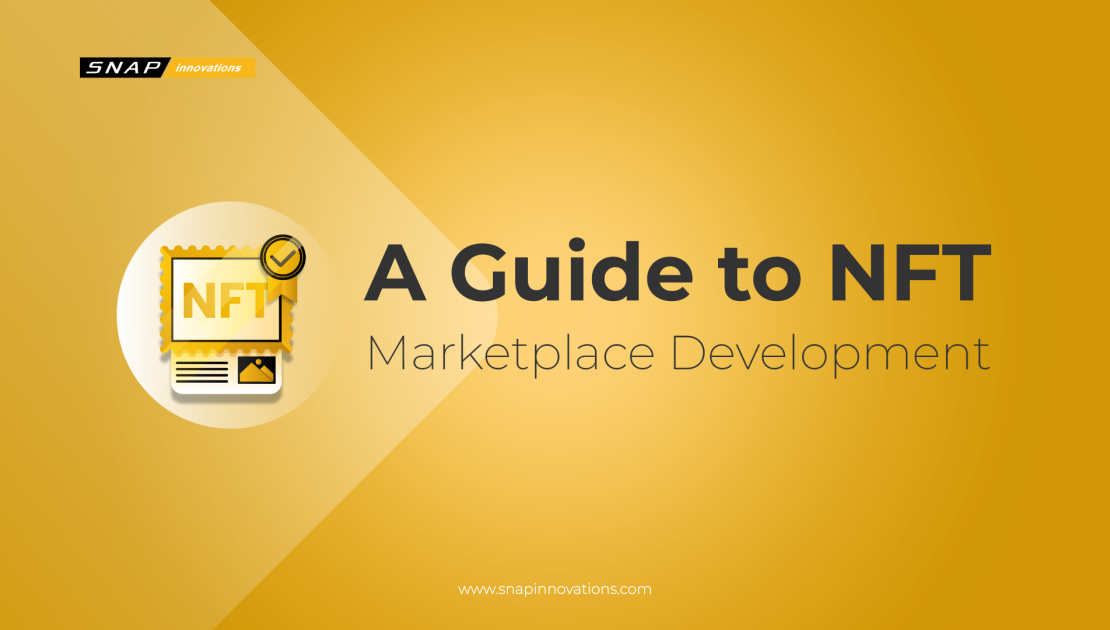In the ever-evolving digital landscape, NFTs (Non-Fungible Tokens) have emerged as the new frontier of the digital economy. These unique digital assets, verifiable via blockchain technology, have taken the world by storm, offering unprecedented opportunities for artists, creators, and investors alike. But behind every successful NFT lies a robust platform that facilitates its trade: the NFT marketplace. This article delves into the nuances of NFT marketplace development, offering insights into its significance, challenges, and the promising future it holds.
The rise of NFTs has been nothing short of meteoric. From digital art selling for millions to collectibles that have fans clamoring for more, the demand for a secure and efficient marketplace has never been higher. So, what does it take to develop such a marketplace? Let’s dive in!
The Significance of NFT Marketplaces
NFT marketplaces are more than just platforms for buying and selling digital assets. They represent the convergence of technology and creativity, providing a space where digital ownership is both celebrated and authenticated. In a world where digital piracy has often plagued creators, NFTs offer a beacon of hope, ensuring that original content is recognized and rewarded.
 Moreover, these marketplaces are democratizing the world of art and collectibles. No longer are high-end auctions the sole domain of the elite. With NFT marketplaces, anyone can become a collector or even an investor. The decentralized nature of blockchain ensures transparency, making it easier for individuals to trust and participate in the process.
Moreover, these marketplaces are democratizing the world of art and collectibles. No longer are high-end auctions the sole domain of the elite. With NFT marketplaces, anyone can become a collector or even an investor. The decentralized nature of blockchain ensures transparency, making it easier for individuals to trust and participate in the process.
Furthermore, NFT marketplaces are fostering communities. Fans, artists, and collectors converge on these platforms, discussing trends, appreciating art, and even forging collaborations. It’s a melting pot of ideas and innovation, driven by a shared passion for digital assets.
Read More: Automated Trading Platform : The Power of Algorithmic Trading
Challenges in NFT Marketplace Development
While the potential of NFT marketplaces is undeniable, developing one is not without its challenges. First and foremost is the issue of scalability. With the surge in NFT popularity, marketplaces need to handle a massive influx of users. This requires robust infrastructure, ensuring that transactions are smooth, and the user experience remains top-notch.
Security is another paramount concern. Given the high value of many NFTs, marketplaces become prime targets for hackers. Implementing multi-layered security protocols, regular audits, and ensuring the overall integrity of the platform is crucial. Users need to feel confident that their assets and personal information are safe.
Interoperability is a challenge that often goes unnoticed. With multiple blockchains supporting NFTs, ensuring that a marketplace can cater to assets from different blockchains is vital. This not only broadens the user base but also enhances the diversity of assets available on the platform.
Lastly, there’s the challenge of staying updated. The world of NFTs is dynamic, with new trends and technologies emerging rapidly. For a marketplace to remain relevant, continuous innovation and adaptation are essential. This means staying abreast of industry changes and being agile enough to incorporate them.
The Future of NFT Marketplace Development
The future of NFT marketplace development is as exciting as it is unpredictable. One thing is certain: the demand for NFTs isn’t waning anytime soon. As more industries recognize the potential of NFTs, from gaming to real estate, the need for specialized marketplaces will grow.
 Integration with augmented reality (AR) and virtual reality (VR) is on the horizon. Imagine walking through a virtual art gallery, appreciating NFT art, and purchasing it on the spot. Or attending virtual concerts where exclusive NFT merchandise is up for grabs. The possibilities are endless.
Integration with augmented reality (AR) and virtual reality (VR) is on the horizon. Imagine walking through a virtual art gallery, appreciating NFT art, and purchasing it on the spot. Or attending virtual concerts where exclusive NFT merchandise is up for grabs. The possibilities are endless.
Moreover, as the technology matures, we can expect NFT marketplaces to become more user-friendly, catering to a broader audience. Features like easy-to-use listing options, advanced search functionalities, and seamless payment integrations will make these platforms more accessible, even to those who are new to the world of digital assets.
Monetizing Strategies for NFT Marketplaces
The rise of NFT marketplaces has not only opened doors for artists and creators but also presented lucrative opportunities for platform developers to monetize their efforts. But how does one go about it without compromising the user experience? Let’s explore some effective strategies.
1. Transaction Fees
NFT marketplaces often derive a significant portion of their revenue from transaction fees. These fees can be structured in various ways: a consistent, flat fee for every transaction or a percentage of the sale price. The latter, while potentially more lucrative for the platform especially during high-value NFT trades, must be approached with caution. It’s essential to set a reasonable cap to ensure sellers aren’t overly burdened.
Transparency in this fee structure is paramount. Users should always be informed upfront about any charges they might incur. Hidden or unexpectedly high fees can erode trust and deter users from engaging with the platform. To foster a loyal user base and maintain a competitive edge, platforms must ensure their fees are both transparent and justifiable.
2. Premium Listings
In the bustling world of NFTs, visibility can make all the difference. By offering artists and sellers premium spots on the platform’s homepage or highlighted sections, marketplaces can create a win-win situation. For artists and sellers, this prime real estate can significantly boost their reach, ensuring their creations don’t get lost in the vast sea of digital assets. This promotional opportunity can act as a beacon, drawing attention to their work and potentially increasing their sales.
3. Subscription Models
For regular users or high-volume sellers, diving deeper into the NFT marketplace often means more frequent transactions and a greater need for enhanced features. This is where a subscription model can truly shine. By offering a tiered subscription system, platforms can cater to these power users by providing them with reduced transaction fees. This not only incentivizes more activity on the platform but also ensures that these regular users feel valued and recognized for their consistent engagement.
4. Partnerships and Collaborations
Collaborating with well-known artists, brands, or influencers for exclusive drops or events can drive significant traffic and sales. These collaborations can be monetized through exclusive fees or shared profits. Such partnerships not only boost the platform’s credibility but also attract a broader audience.
Incorporating these monetization strategies requires a delicate balance. It’s crucial to ensure that while the platform remains profitable, the users and creators feel valued and not exploited. After all, the success of an NFT marketplace lies in the community it fosters and the trust it builds.
Tips for Aspiring NFT Marketplace Developers
 If you’re looking to dive into the world of NFT marketplace development, here are some tips to set you on the right path:
If you’re looking to dive into the world of NFT marketplace development, here are some tips to set you on the right path:
1. Educate Yourself
Dive deep into the world of NFTs and blockchain by leveraging online courses on platforms like Coursera and Udemy. Engage in forums like CryptoCompare or Bitcointalk to stay updated and gain insights from real-time discussions. Continuous learning is essential, given the dynamic nature of the industry.
2. Prioritize User Experience
A user-friendly interface is paramount. Ensure your platform boasts an intuitive design, clear navigation, and is responsive across devices. Regularly test and iterate based on user feedback to maintain a seamless experience, encouraging users to return and engage.
3. Stay Updated
Immerse yourself in the NFT community by joining dedicated groups on platforms like Reddit, Discord, and Telegram. Attend industry webinars and conferences to gain insights from experts and stay abreast of the latest trends. Subscribing to niche newsletters can also keep you informed.
4. Collaborate
Building a successful NFT marketplace is a collective effort. Network at industry events to find experts in blockchain, cybersecurity, and design. Foster strong relationships with these professionals, understanding that each brings a unique and invaluable perspective to the development process.
Also Read: FIX Protocol: Secrets of How It Really Works
Conclusion
NFT marketplace development is at the intersection of technology and art. It’s a realm that promises immense potential, not just in terms of economic gains but also in reshaping how we perceive digital ownership and value. As we stand on the cusp of this digital revolution, it’s essential to approach it with both enthusiasm and caution.
For those aspiring to contribute to this space, remember that it’s a journey of continuous learning and adaptation. The world of NFTs is vast, exciting, and ever-evolving. Embrace it with an open mind, and you might just be at the forefront of the next big digital wave.


